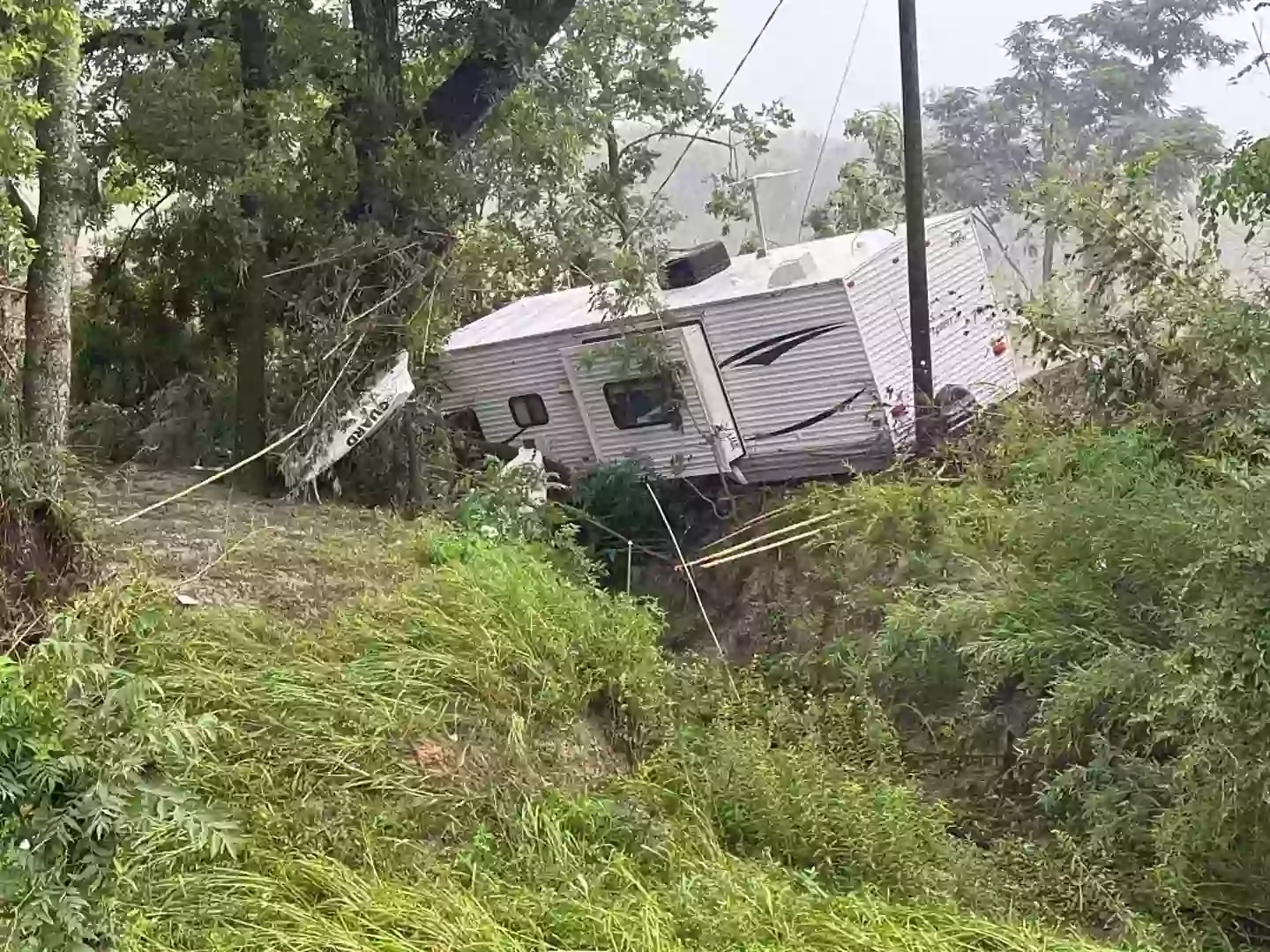Texas Flash Flood Emergency: Examining the Human Cost of Extreme Weather Events
Executive Summary
The devastating flash floods that struck central Texas and Kerr County during the Independence Day weekend represent one of the most catastrophic weather-related disasters in the region’s recent history. The tragedy, which claimed at least 105 lives including 28 children, highlights the vulnerability of communities to extreme weather events and the profound human cost of natural disasters in recreational and residential areas.

This comprehensive analysis examines the meteorological conditions that led to the flooding, the human impact on affected families and communities, emergency response challenges, and the broader implications for disaster preparedness and climate resilience. Through careful examination of witness accounts, emergency response efforts, and community impact, this report provides insights into the complex dynamics of flash flood disasters and their lasting effects on surviving family members and communities.
The case study focuses particularly on the experiences of families like the Burgess family, whose tragic story illustrates both the heroic efforts of parents to protect their children and the overwhelming power of natural forces during extreme weather events. Their experience serves as a representative example of the human elements underlying statistical casualty figures and emphasizes the importance of comprehensive disaster preparedness and response systems.
Meteorological Analysis and Flood Development
Atmospheric Conditions and Precipitation Patterns
The flash flooding event that devastated central Texas resulted from an exceptional convergence of meteorological factors that produced rainfall rates far exceeding normal parameters for the region. Weather analysis indicates that the affected areas received approximately one month’s worth of precipitation within a matter of hours, creating conditions that overwhelmed local drainage systems and natural watercourses.
The rapid accumulation of rainfall occurred during a period when atmospheric moisture content was unusually high, combined with slow-moving storm systems that concentrated precipitation over relatively small geographic areas. These conditions created what meteorologists term “training” thunderstorms, where multiple storm cells moved repeatedly over the same areas, compounding rainfall totals and increasing flood risk exponentially.

The intensity and duration of the precipitation event exceeded design parameters for local infrastructure and emergency planning scenarios, illustrating the challenges communities face when confronting weather events that fall outside historical experience ranges. The meteorological data from this event contributes to ongoing research about extreme weather patterns and their relationship to broader climate trends affecting the southwestern United States.
Hydrological Impact and River Systems
The Guadalupe River system, which serves as the primary drainage for much of the affected region, experienced unprecedented water level rises that transformed normally manageable waterways into dangerous torrents. River gauge data indicates that water levels rose to approximately 26 feet within a 45-minute period, creating conditions that provided minimal warning time for residents and emergency responders.
The rapid rise in water levels reflects the combined impact of intense rainfall over the river’s entire watershed, creating a concentrated surge of water that moved downstream faster than evacuation and emergency response systems could effectively manage. The speed of water level changes in flash flood events presents particular challenges for emergency management, as traditional flood warning systems may not provide adequate lead time for protective actions.
The hydrological analysis of this event provides valuable data for improving flood prediction models and emergency warning systems, particularly for communities located in areas susceptible to rapid water level changes. Understanding these dynamics is crucial for developing more effective protective measures and emergency response protocols for similar geographic and meteorological conditions.
Geographic Vulnerability and Land Use Factors
The areas most severely affected by the flooding included recreational vehicle parks, mobile home communities, and vacation rental facilities located in proximity to waterways during peak holiday occupancy. These land use patterns created conditions where large numbers of people, including many unfamiliar with local geography and evacuation routes, were concentrated in areas with high flood risk and limited emergency egress options.
The destruction of 28 recreational vehicles at the Blue Oak RV Park alone illustrates the vulnerability of temporary residential structures to flood conditions, while the displacement of mobile homes and vacation cabins demonstrates how quickly rising waters can overwhelm communities designed for recreational rather than permanent occupancy. These land use patterns require special consideration in emergency planning and flood risk assessment.
The holiday timing of the disaster meant that many affected individuals were visitors to the area who lacked familiarity with local emergency procedures, evacuation routes, and flood risk awareness. This factor complicated both immediate emergency response and ongoing recovery efforts, as emergency responders had to manage populations that included both local residents and temporary visitors with varying levels of local knowledge and preparation.
Human Impact and Individual Tragedies
The Burgess Family Experience
The Burgess family’s tragic experience exemplifies the profound human cost of natural disasters and the heroic efforts of parents to protect their children under impossible circumstances. John Burgess and his wife Julia Anderson Burgess had traveled from Liberty, Texas, to the Hill Country area with their two young sons to collect their eldest daughter from a summer camp program that had remained unaffected by the flooding.
According to witness accounts provided by Lorena Guillen, owner of the Blue Oak RV Park where the family was staying, John Burgess was observed desperately holding his two young sons while attempting to maintain their position against a tree as flood waters surged around them. The witness testimony describes both the father’s determination to protect his children and the overwhelming force of the flood waters that ultimately separated the family.
Guillen’s account of her husband’s attempts to assist the family, including efforts to encourage John Burgess to release the children so they could be pulled to safety individually, illustrates both the community response to the emergency and the difficult decisions faced by individuals during life-threatening situations. The tragic outcome, despite these heroic efforts by both family members and community members, underscores the limitations of individual action when confronting the full force of natural disasters.
Community Response and Witness Accounts
The experiences of community members and witnesses during the flooding provide crucial insights into both the immediate human response to disaster conditions and the lasting psychological impact on survivors. Guillen’s description of hearing screams throughout the night and watching recreational vehicles and cabins being swept away in darkness illustrates the terror and helplessness experienced by those who survived the initial impact.
The witness accounts describe a community where neighbors and strangers alike attempted to assist each other despite extreme personal danger, with multiple reports of individuals entering flood waters to attempt rescues even when such efforts placed their own lives at risk. These responses reflect both the instinctive human response to help others in crisis and the limitations of untrained civilian rescue efforts in extreme conditions.
The psychological impact on witnesses who observed family separations and were unable to prevent tragic outcomes represents a lasting component of disaster impact that extends beyond immediate physical casualties. The community’s ongoing grief and trauma, as expressed by neighbors like Winnie Taylor, demonstrates how natural disasters affect entire communities rather than only direct victims and their immediate families.
Search and Recovery Operations
The extensive search and recovery operations that continued for days following the initial flooding event involved coordination between multiple emergency response agencies, volunteer organizations, and community members working to locate missing persons and recover victims. The scale of the operation, spanning multiple counties and waterway systems, illustrates the complexity of managing disaster response across large geographic areas affected by flood conditions.
Recovery operations faced particular challenges due to the dispersal of victims and debris across wide areas downstream from initial impact zones, requiring systematic search patterns and coordination between multiple jurisdictions. The ongoing search for the Burgess children and other missing persons demonstrates both the commitment of emergency responders and the practical difficulties of flood victim recovery in complex terrain.
The emotional toll on emergency responders and volunteers participating in recovery operations represents an often-overlooked aspect of disaster impact that affects the broader community’s long-term recovery and resilience. The psychological support needs of these individuals require consideration in comprehensive disaster response and community recovery planning.
Emergency Response and System Challenges
Warning Systems and Communication
The rapid development of flood conditions during this event highlighted both the strengths and limitations of existing emergency warning systems designed to alert communities about impending flood risks. The 45-minute timeframe for water levels to rise from normal to dangerous levels provided minimal opportunity for effective warning dissemination and protective action implementation, even when systems functioned as designed.
Emergency communication systems faced additional challenges due to the holiday timing of the event, when many residents and visitors were engaged in recreational activities that may have limited their access to traditional warning channels such as emergency broadcasts or official notifications. The concentration of visitors in recreational areas also meant that many affected individuals were unfamiliar with local emergency procedures and evacuation routes.
The effectiveness of informal warning systems, including word-of-mouth communication between community members and direct observation of changing conditions, proved crucial in many cases but also highlighted the limitations of relying on informal networks during rapidly developing emergency situations. The integration of formal and informal warning systems represents an important consideration for improving community emergency preparedness.
Rescue Operations and Resource Coordination
Emergency response agencies faced significant challenges in coordinating rescue operations across multiple affected communities while managing resource allocation during an event that overwhelmed normal response capabilities. The simultaneous need for immediate rescue operations, medical response, and evacuation assistance across a wide geographic area strained available resources and required rapid coordination between multiple agencies and jurisdictions.
The deployment of specialized rescue teams, including swift water rescue specialists and aerial search units, demonstrated the importance of maintaining specialized emergency response capabilities for low-frequency but high-impact events like flash flooding. However, the scale of the disaster also illustrated how even well-prepared emergency response systems can be overwhelmed by the magnitude and simultaneous nature of multiple emergency situations.
The coordination between professional emergency responders and volunteer rescue efforts required careful management to ensure both effective resource utilization and safety for all personnel involved in rescue operations. The balance between accepting volunteer assistance and maintaining operational safety and coordination represents a crucial challenge in large-scale disaster response operations.
Medical and Support Services
The provision of emergency medical services during and immediately following the flooding event required rapid deployment of medical personnel and equipment to areas where normal healthcare infrastructure had been damaged or destroyed. The treatment of flood-related injuries, hypothermia, and trauma required specialized medical approaches adapted to disaster conditions and limited resource availability.
The establishment of temporary sheltering and support services for displaced individuals and families required coordination between emergency management agencies, charitable organizations, and volunteer groups to provide basic necessities including food, clothing, and temporary housing. The holiday timing of the event complicated these efforts due to reduced availability of some support services and increased demand from displaced visitors and tourists.
The long-term medical and psychological support needs of survivors, including trauma counseling and ongoing medical care for flood-related injuries, represent continuing challenges that extend well beyond the immediate emergency response period. The development of comprehensive support systems for disaster survivors requires coordination between multiple service providers and sustained community commitment to recovery efforts.
Community Recovery and Long-term Impact
Economic Impact and Recovery Challenges
The economic impact of the flooding event extends far beyond the immediate costs of property damage and emergency response, affecting local businesses, tourism infrastructure, and individual family financial stability. The destruction of recreational vehicle parks, vacation rental properties, and tourism-related businesses occurred during peak summer season, compounding economic losses and affecting annual revenue cycles for many community businesses.
The insurance and financial recovery challenges faced by affected families include complex claims processes, coverage limitations for flood damage, and the significant costs associated with replacing personal property and temporary housing during reconstruction periods. Many families face ongoing financial hardship that extends months or years beyond the initial disaster event, affecting their long-term stability and recovery prospects.
The broader economic impact on the regional tourism industry, which represents a significant component of the local economy, includes both immediate losses from cancelled reservations and longer-term effects on destination reputation and visitor confidence. The recovery of tourism-dependent communities requires coordinated marketing and infrastructure rebuilding efforts that may take several years to fully implement.
Infrastructure Rebuilding and Resilience Planning
The rebuilding of damaged infrastructure provides opportunities to implement improved flood resilience measures and updated building standards that better protect communities from future extreme weather events. The reconstruction of recreational vehicle parks, mobile home communities, and vacation rental facilities offers chances to relocate or redesign facilities with improved flood protection and emergency egress capabilities.
The integration of lessons learned from this disaster into local building codes, zoning regulations, and emergency planning procedures represents an important opportunity to improve community resilience and reduce vulnerability to similar future events. However, the implementation of improved standards must balance increased safety with economic feasibility and community development goals.
The development of improved early warning systems, evacuation procedures, and emergency communication networks based on the experiences and challenges identified during this event could significantly improve community preparedness for future flood risks. These improvements require sustained investment and community commitment to long-term resilience rather than simply returning to pre-disaster conditions.
Memorial and Community Healing
The establishment of appropriate memorials and remembrance activities for victims of the flooding serves important functions in community healing and ensuring that lessons learned from the tragedy are preserved for future generations. The memory of families like the Burgess family and their experiences during the disaster provides powerful motivation for continued improvement in emergency preparedness and flood protection measures.
Community healing processes, including support groups, memorial services, and collective recovery activities, help address the psychological trauma experienced by survivors, witnesses, and community members affected by the disaster. These healing processes require sustained support and recognition that recovery from traumatic events is a long-term process that affects entire communities rather than only direct victims.
The integration of disaster experiences into community education and preparedness programs ensures that future residents and visitors benefit from lessons learned during this tragic event. Educational initiatives that share survivor experiences and promote flood safety awareness serve as living memorials that honor victims while protecting future community members from similar risks.
Conclusion and Future Preparedness
Lessons Learned and Preventive Measures
The tragic flooding event in central Texas provides crucial insights into the vulnerability of communities to extreme weather events and the importance of comprehensive disaster preparedness that addresses both immediate emergency response and long-term resilience building. The experiences of families like the Burgess family illustrate both the heroic human response to disaster conditions and the limitations of individual action when confronting overwhelming natural forces.
The meteorological and hydrological analysis of this event contributes valuable data for improving flood prediction, warning systems, and emergency response protocols that could prevent similar tragedies in future extreme weather events. The rapid development of dangerous conditions highlights the need for warning systems and evacuation procedures designed to function effectively within very short timeframes.
The community response and recovery efforts demonstrate both the strength of human resilience and mutual support during crisis situations and the ongoing need for systematic improvements in emergency preparedness, infrastructure resilience, and support systems for disaster survivors. The memory of those lost in this tragedy, including John Burgess and his family, serves as motivation for continued efforts to protect communities from similar disasters while honoring their sacrifice through improved safety and preparedness measures.
The path forward requires sustained commitment to both immediate improvements in emergency response capabilities and long-term investments in community resilience that reduce vulnerability to extreme weather events while supporting economic vitality and quality of life for residents and visitors. The lessons learned from this tragedy must inform ongoing efforts to build safer, more resilient communities capable of protecting all community members from the increasing risks associated with extreme weather events.

Ethan Blake is a skilled Creative Content Specialist with a talent for crafting engaging and thought-provoking narratives. With a strong background in storytelling and digital content creation, Ethan brings a unique perspective to his role at TheArchivists, where he curates and produces captivating content for a global audience.
Ethan holds a degree in Communications from Zurich University, where he developed his expertise in storytelling, media strategy, and audience engagement. Known for his ability to blend creativity with analytical precision, he excels at creating content that not only entertains but also connects deeply with readers.
At TheArchivists, Ethan specializes in uncovering compelling stories that reflect a wide range of human experiences. His work is celebrated for its authenticity, creativity, and ability to spark meaningful conversations, earning him recognition among peers and readers alike.
Passionate about the art of storytelling, Ethan enjoys exploring themes of culture, history, and personal growth, aiming to inspire and inform with every piece he creates. Dedicated to making a lasting impact, Ethan continues to push boundaries in the ever-evolving world of digital content.
